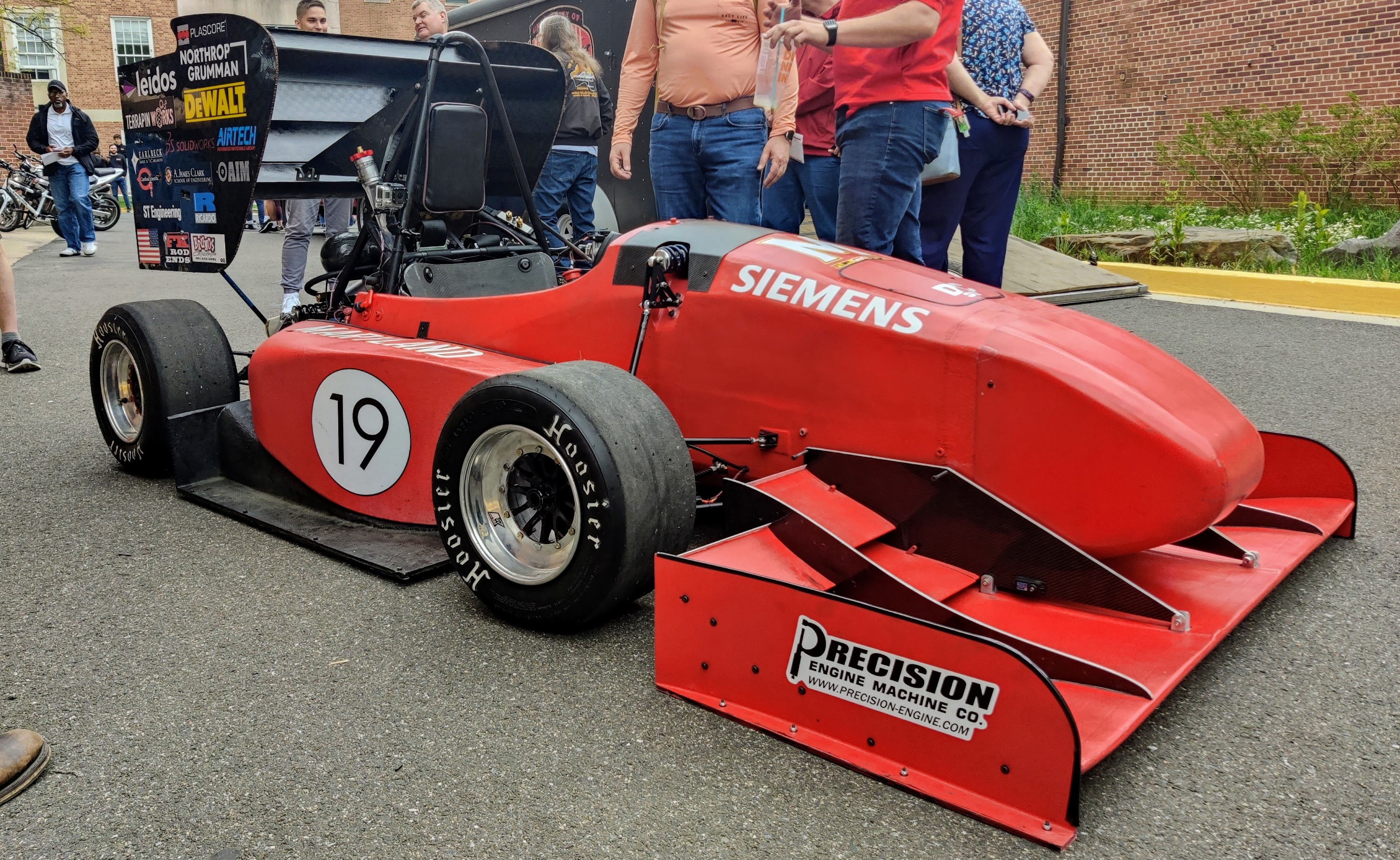A team that builds small-scale formula racing cars for competition? Count me in. I was a member of the composites subteam, a team full of all mechanical engineers, one materials scientist, a computer engineer (me), and a former mechanical engineering turned computer science student.
The Story
I helped build the carbon fiber monocoque for our 2023 formula car. Why not this years, you might ask. That’s a great question. There are two reasons:
- Failure
- COVID
Failure? Yeah, we spent months building two separate monocoques, both of which failed. The week after I joined the club, the first monocoque was stuck to our mold, as the mold release did not work properly. We were physically unable to remove it. So, we sawed it in half. There went a month of work for the rest of the team.
We recalibrated, starting from scratch. We had to repair a multi-thousand dollar mold, which was partially destroyed from sawing the failed monocoque off. With no money and time for a new one, we had to make do with what we had, repairing the mold with loads of bondo, sanding, and unscrewing. Those tasks took hundreds of hours of gruelling work. However, we were able to perfect the mold release. After three months of work, we had the car frame sealed together. Essentially, we fused the top and bottom of the car mold, drilled all the necessary holes, made sure the carbon fiber was spanking clean, waxed, and smooth. The process took teamwork, sweat, re-engineering, and dedication. After we sent it off to the “oven” at Middle River Aerostructure Systems (MRAS) to cure (needs to harden), we were on the home stretch.
On the day the monocoque was slated to return from the MRAS, I woke up late to see its grand entrance. As I walked near our machine shop, I could hear piercing loud clanging in rapid succession. As I walked near the garage entrance, I could see Sam smashing our precious monocoque with a giant hammer (don’t worry, carbon fiber is strong). Essentially, the monocoque partially deformed in the oven, producing an unsalvageable hunk of carbon fiber. The second failure was much worse than the first. A dozen all-nighters spent on remaking the coque wasted. But, we were not defeated. The third time, we would do the entire process right. We would figure out why the coque deformed, and we were going to succeed. And we did.
It was fine that the monocoque was only finished in the second semester. Despite the looming competition ahead, we had our unused car from 2021. It used an older (and inferior) monocoque design, but it was suitable for our needs this year. It was also far from finished. While the rest of the team worked on driving dynamics, the engine, and electronics, the composites team helped build the sidepods, undertrays, and aero elements of the car, all out of carbon fiber. It was time-consuming, fully hands-on work. Over the year, I learned a lot about composite structures, industry standards for molding, and sanded objects until my skin started to peel. Something about the process was very gratifying. Leaving the shop covered in sawdust, carbon fiber sand, and caustic epoxy residue, I felt like the world’s best handyman. Working with the team was loads of fun. I owe my fun to my team members: Max, Sam, Ryan, Nick, and Aly. I also owe my fun to the expensive equipment, industry-grade gas masks, and dangerous tools. No doubt was that part of the appeal.
I don’t know if I will be back on the same team next year, but I intend to be back in the shop every now and then to get my hands dirty once in a while. It’s really an experience I don’t want to lose.
The LinkedIn Version
- Built the carbon fiber monocoque and aerodynamic components of the team’s formula car
- Learned design and engineering process of developing rigid automotive structures
- Implemented carbon fiber layups, vacuum sealing, wet and dry sanding, 3D printing, Bondo, epoxy + resin, molding/mold release, waxing
